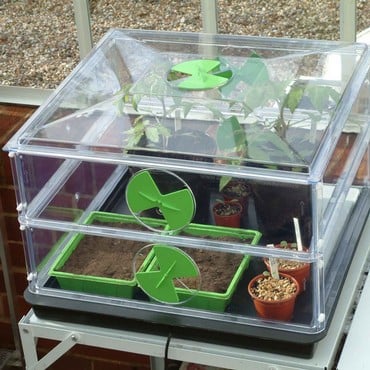Aubergines
EASE OF GROWING: (Scale 1-5): 2
HOW TIME CONSUMING:
Aubergines are very similar to tomatoes and peppers to grow. They require the same conditions and much the same care. They require weekly feeding, daily watering and are best grown undercover.
RECOMMENDED VARIETIES:
Long Purple
Moneymaker
Black Beauty
HOME GROWN VS SUPERMARKET:
Aubergines are a beautiful and satisfying crop to grow, and so much cheaper than those in the supermarket. The taste is much better too.
BEST SITES AND SOILS:
Aubergines require warm sunny conditions as they are a mediterranean crop. They are best grown in large pots in the greenhouse. In a hot, dry summer they may do well on a sunny, sheltered patio.
WHEN TO SOW:
Sow seed in late February in a heated propagator set at 20C. Aubergines have a long growing season so it is best to start them off early. In Stephanie’s kitchen garden we sow them into individual modules, growing them on at 16C once they are a healthy good size seedling.
DISTANCE BETWEEN PLANTS:
Aubergines grow into good sized plants, similar to peppers and tomatoes. They require a large pot per plant. Allow a little room between pots in the greenhouse to allow air to circulate to help prevent mould and pests.
WHEN TO HARVEST:
The first aubergines should be ready for picking from July. The plants will crop until October under cover. Fruits may need some overnight fleece protection in the autumn to help them ripen.
FURTHER INFORMATION:
When your young plants are about 12 inches tall, pinch out the growing tip to allow the plant to bush out. Aubergines may need staking as they are a heavy plant. Once the first fruit has set, begin feeding weekly with a liquid tomato feed. Water regularly and mist the plants to keep them humid. To achieve good size fruits, allow 5 or 6 fruits to develop and then pinch off any remaining flowers from the plant. This will encourage the plant to divert its energy to filling out the existing fruits.
PROBLEMS TO LOOK OUT FOR:
Greenfly can be a problem on young plants. Plants can be sprayed with insect killer spray or you can introduce ladybird larvae to keep them under control.
Red spider mite and white fly can also infect aubergine plants. Spider mite killer sachets and whitelfy control are effective biological controls against these pests.

























